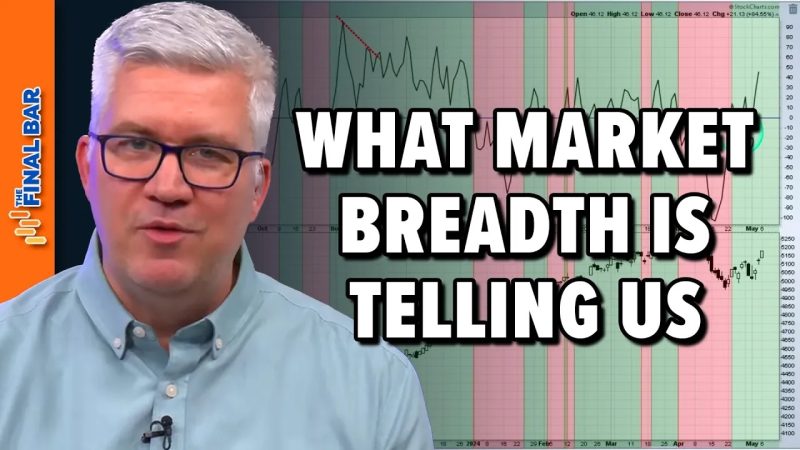Market Breadth Indicator: A Crucial Tool for Investors to Watch
Breathing life into the often murky world of financial markets is a set of indicators that help investors better understand the overall health of the market. While many investors follow popular indicators like the S&P 500 or Dow Jones Industrial Average, there’s another less-known yet equally important indicator that is gaining recognition among seasoned investors – the Market Breadth Indicator.
What is the Market Breadth Indicator?
The Market Breadth Indicator is a tool that provides insights into the overall strength or weakness of the market by analyzing the number of rising and falling stocks within a specific market. Unlike traditional market indicators that rely on price movements of a few select stocks, the Market Breadth Indicator looks at a broad spectrum of stocks, offering a comprehensive view of market performance.
How Does It Work?
The Market Breadth Indicator is calculated by comparing the number of advancing stocks (stocks that are increasing in value) to the number of declining stocks (stocks that are decreasing in value) within a certain market index. By analyzing this data, investors can gauge the underlying market sentiment and trends that may not be apparent by simply looking at price movements of individual stocks.
Why Should Investors Pay Attention to It?
While price movements of individual stocks can provide valuable insights, they may not always accurately reflect the overall market sentiment. The Market Breadth Indicator, on the other hand, offers a more holistic view of the market by taking into account a broader range of stocks. This can help investors identify potential market trends, spot divergences, and make more informed investment decisions.
Additionally, the Market Breadth Indicator can help investors gauge the level of participation in market movements. A market that is supported by a broad base of advancing stocks is typically considered healthier and more sustainable than one where only a few stocks are driving the gains.
How Can Investors Use It?
Investors can use the Market Breadth Indicator in various ways to enhance their investment strategies. For instance, a strong Market Breadth Indicator, where a significant number of stocks are advancing, may indicate a healthy and robust market. In this case, investors may feel more confident in holding on to their investments or even consider increasing their exposure to the market.
Conversely, a weak Market Breadth Indicator, with a majority of stocks declining, could signal underlying weakness in the market. Investors may choose to adopt a more defensive approach by reducing their exposure to riskier assets or holding onto cash until market conditions improve.
In Conclusion
As investors navigate the ever-changing landscape of financial markets, having a solid understanding of the Market Breadth Indicator can provide a valuable edge. By looking beyond individual stock price movements and focusing on the overall market breadth, investors can gain deeper insights into market sentiment, trends, and potential investment opportunities. As the saying goes, the trend is your friend, and the Market Breadth Indicator can help investors stay informed and make more informed investment decisions.
